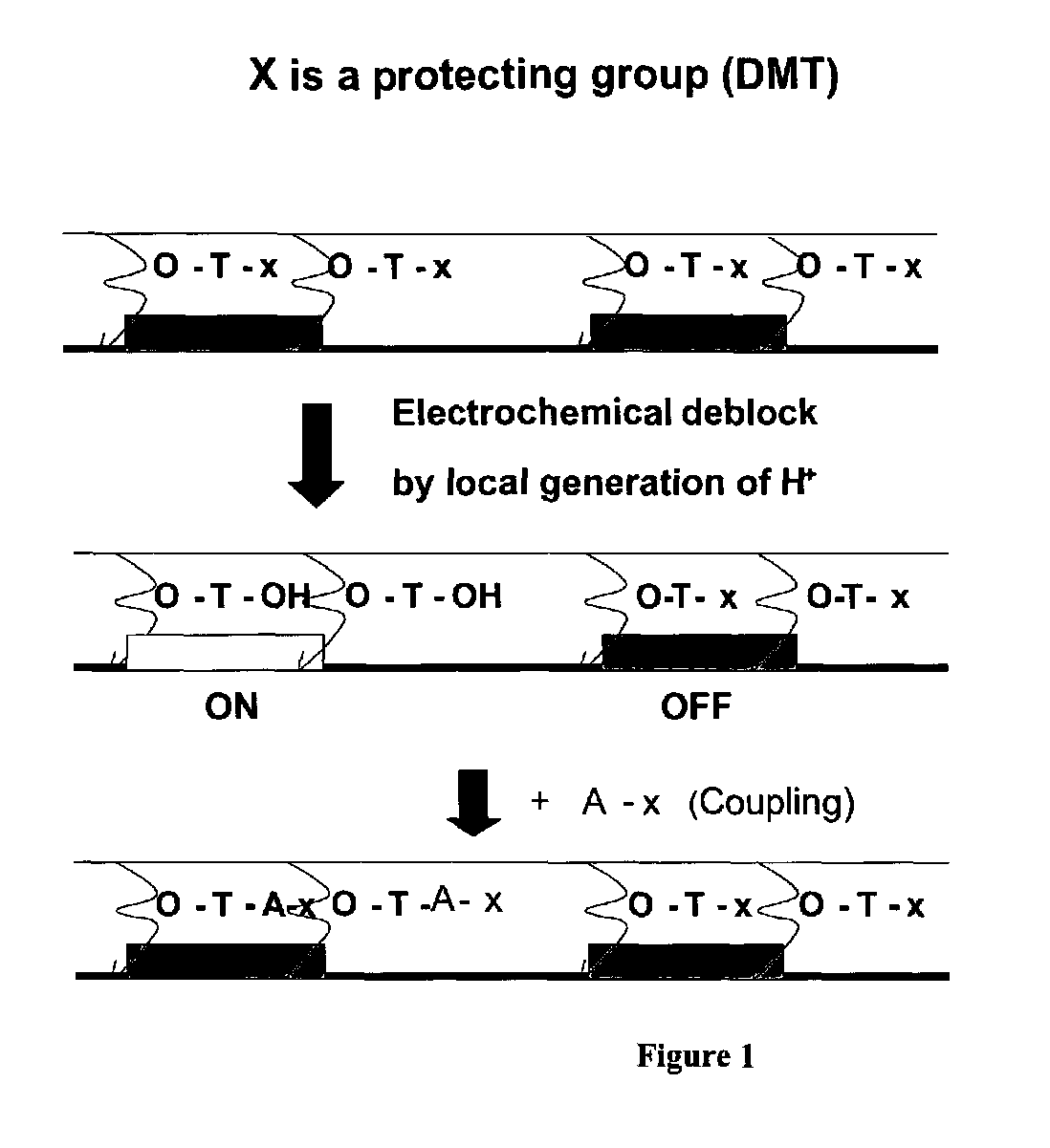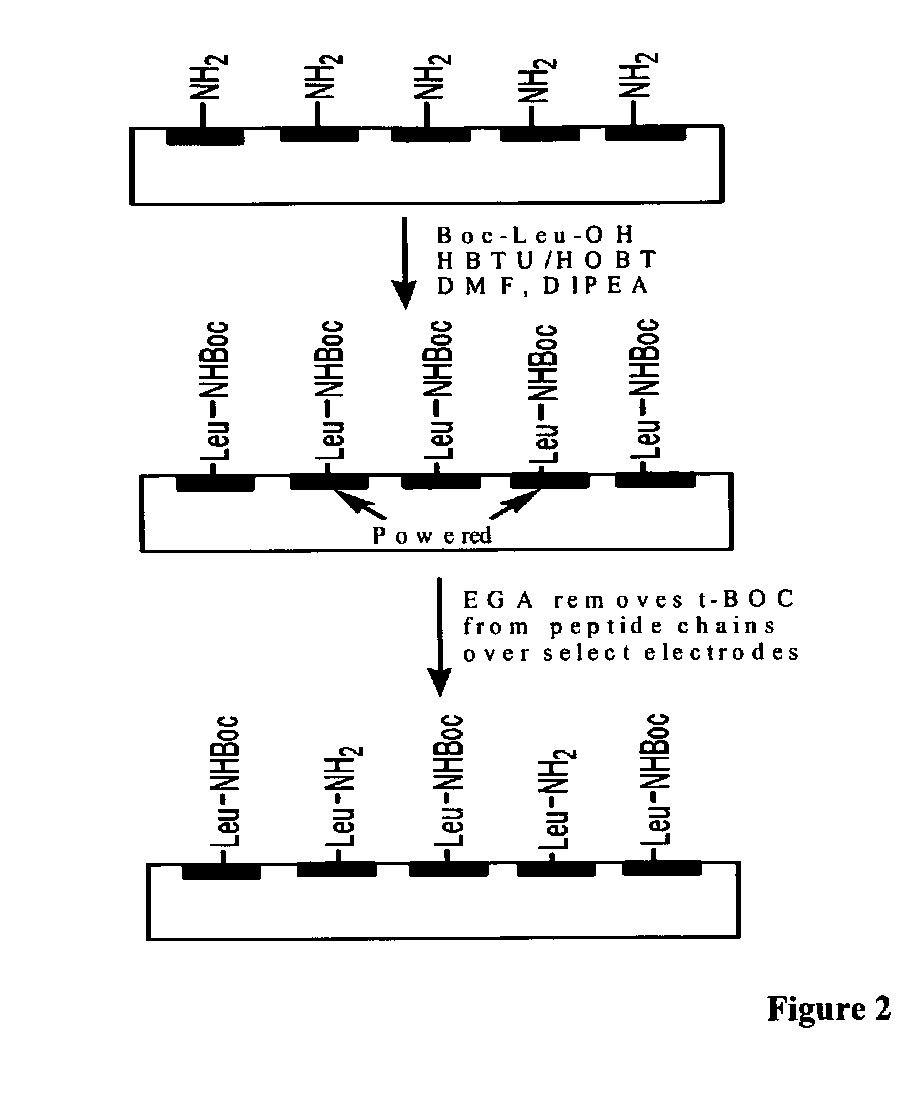Neutralization and containment of redox species produced by circumferential electrodes
a technology of redox species and electrodes, applied in the field of electrochemical arrays, can solve the problems of undesirable extra synthesis, labile groups, and insufficient understanding of crosstalk, so as to prevent bleeding over of ph changes, reduce the distance between electrodes, and reduce the chance of crosstalk or ph bleed
- Summary
- Abstract
- Description
- Claims
- Application Information
AI Technical Summary
Benefits of technology
Problems solved by technology
Method used
Image
Examples
example 1
[0065]This example provides a chemical description of an electrochemical buffer formulation using an electrode array having a plurality of discontinuous circumferential electrodes. The central electrode producing protons (i.e., anode) is surrounded by a discontinuous set of electrodes (i.e., acting as cathodes) that help neutralize the protons, which are produced and diffuse away from the anode (active electrode) as shown in FIG. 8. In FIG. 8, the active electrode marked “A” represents the anode. The surrounding electrodes marked “C” are the cathodes. The active electrode can be turned “on” (i.e., generate current flow or voltage) to generate acid, while the surrounding electrodes can also be “turned on” (opposite voltage or current flow) to produce base. The discontinuous circumferential ring of electrodes (cathodes or counter electrodes in this example) also represents a form of circumferential electrodes, but they are not attached to each other (i.e., are discontinuous). However,...
example 2
[0067]This example illustrates different confinement techniques for electrochemical synthesis of oligonucleotides. We synthesized approximately 1,000 sequences of different 35-mer oligonucleotides on two separate CUSTOMARRAY™ oligonucleotide microarray devices each having over 12,000 electrode sites with a distance between the outer edges of circular electrodes of approximately 33 microns. For the control oligonucleotide microarray, we synthesized oligonucleotide probes electrochemically using the method disclosed in the Montgomery patents having a buffered deblocking solution to try to confine the acid generated at the active (anode) electrodes. This technique further utilized an off chip Pt electrode as a common counter electrode. In addition, four-fold extra systemic base was added to the deblocking solution for the control oligonucleotide array as compared with the inventive oligonucleotide array using a discontinuous circumferential electrode pattern. The pattern of oligonucleo...
PUM
| Property | Measurement | Unit |
|---|---|---|
| average distance | aaaaa | aaaaa |
| distance | aaaaa | aaaaa |
| diameter | aaaaa | aaaaa |
Abstract
Description
Claims
Application Information
 Login to View More
Login to View More - R&D
- Intellectual Property
- Life Sciences
- Materials
- Tech Scout
- Unparalleled Data Quality
- Higher Quality Content
- 60% Fewer Hallucinations
Browse by: Latest US Patents, China's latest patents, Technical Efficacy Thesaurus, Application Domain, Technology Topic, Popular Technical Reports.
© 2025 PatSnap. All rights reserved.Legal|Privacy policy|Modern Slavery Act Transparency Statement|Sitemap|About US| Contact US: help@patsnap.com



